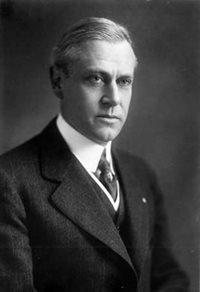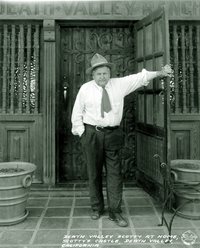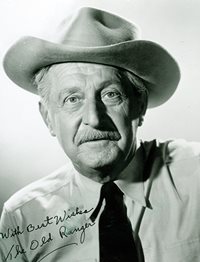Tales of the Wild West—filled with drama and rugged, uncharted landscape—captivated Americans for the first half of the 20th century. And no show captured the pioneering spirit of Western living quite like Death Valley Days.
As radio’s first Western drama, Death Valley Days aired for more than two decades—from September 30, 1930 to September 14, 1951. Years later, television producers revitalized the popular program, extending it for yet another decade-plus tenure.
The anthology-style show featured engaging writing, renowned actors, and authentic narratives.
But without sponsorship from Pacific Coast Borax Company—which later became U.S. Borax—this iconic show would never have reached audiences.
How Death Valley Days Was Born
 From the late 1880s—when borates were first discovered in California and Nevada—until the 1930s, borax was largely promoted in leading household magazines through articles and letters to the editor.
From the late 1880s—when borates were first discovered in California and Nevada—until the 1930s, borax was largely promoted in leading household magazines through articles and letters to the editor.
In the early days, Steve Mather, the vice president’s son, was responsible for establishing the 20 Mule Team® Borax brand. He suggested developing the brand around the compelling, true story of 20-mule teams hauling borates 165 miles across grueling desert heat. He believed people would associate the powerful mules with a powerful cleanser.
Finding ways to connect with the right audience was the next challenge. Enter the radio.
As radios became a mainstream part of American culture, Pacific Coast Borax Company approached the advertising agency McCann Erickson with an idea: Produce a Western radio drama and we will sponsor it.
However, the agreement came with one important condition: The writer must have first-hand knowledge of the Death Valley region.
The agency executives assigned the project to one of the few writers on staff experienced in radio writing, Ruth Woodman, a mother of two and a wife to a New York investment banker. Woodman fully committed to her new role, traveling to Death Valley each summer for 14 consecutive years. She used this knowledge to write episodes based on truthful accounts of conditions in the West.

Adventure found Woodman on her very first trip when she met a man called “Death Valley Scotty,” who had built a castle in the desert and rode around in a car that had a machine gun on the front.
Woodman’s visits enabled her to capture Death Valley’s setting authentically. Many critics believed this authenticity is why the show captivated audiences. Even teachers recommended the show to supplement students’ history studies.
Program sponsorship was a relatively new concept. As part of the sponsorship, the show featured borax products in commercials—and became a pioneering example of product placement in select episodes where borax appeared in the story’s script.
Listen to a few episodes of Death Valley Days on radio.
Death Valley Days Rides Again
Seven years after Death Valley Days’s tenure on radio ended, producers revitalized the show for television.
Once again, borax made its way inside American households this time in pictures.
The TV series followed the anthology format, while featuring stars that made one-time or recurring guest appearances, including Clint Eastwood, Ricardo Montalbán, Ellen Burstyn, Nick Nolte, Cesar Romero, and James Edwards.


Viewers counted on Old Ranger as the iconic host of almost every show. Played by actor Stanley Andrews, Old Ranger appeared in 296 episodes from 1952-1964.
The television series also brought in recognized Hollywood names as show hosts including Robert Taylor, Dale Robertson, and Ronald Reagan, in his last professional acting role.
Death Valley Days’s television run included more than 450 episodes and another multi-decade tenure (1952 - 1975).
Death Valley Days Lives On
Now that the Wild West has been tamed, the archived Death Valley Days episodes still offer a nostalgic glimpse into what life was like on the frontier.
The show’s legacy lives on in the hearts and minds of Americans, even after its ride into the sunset.
Resources